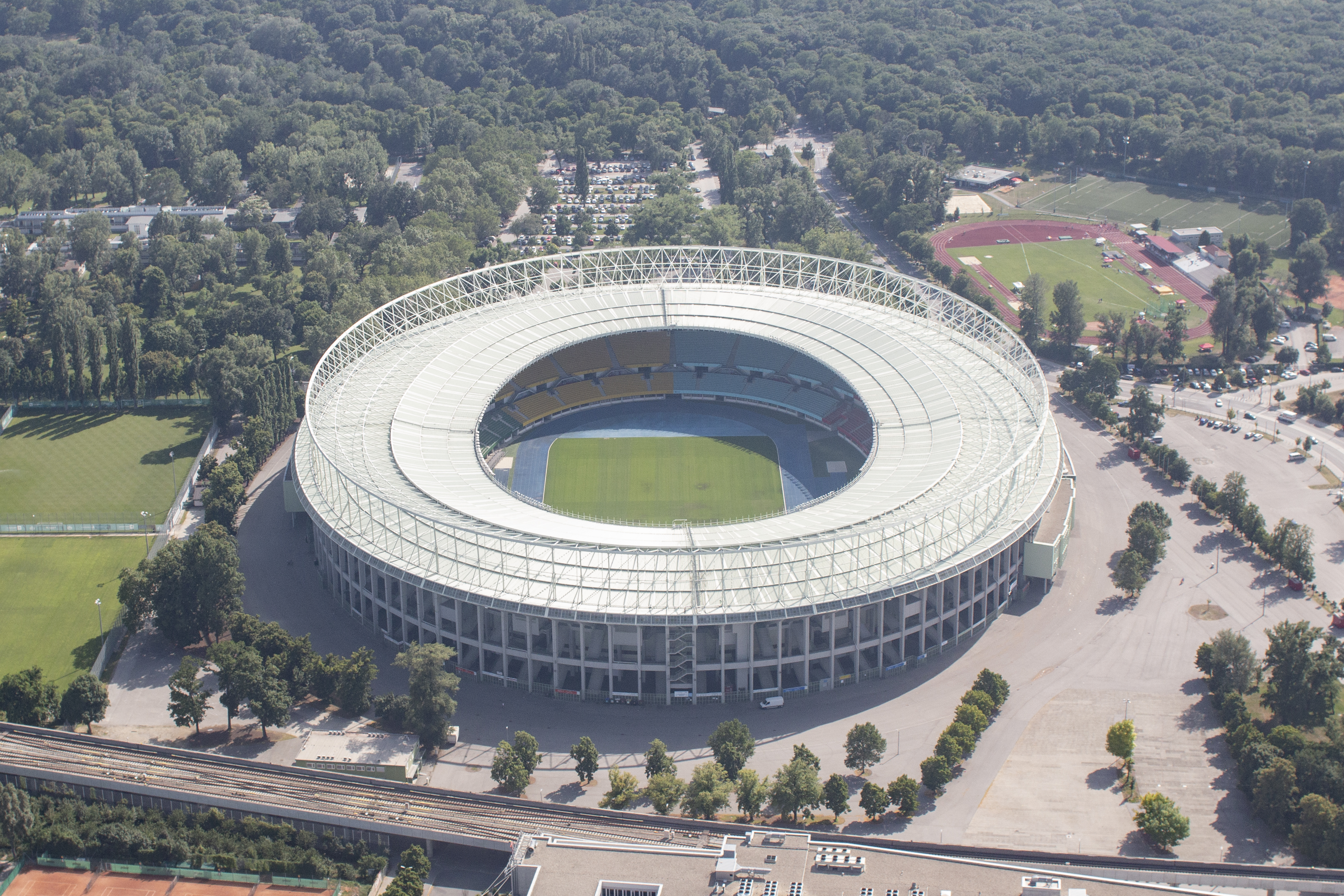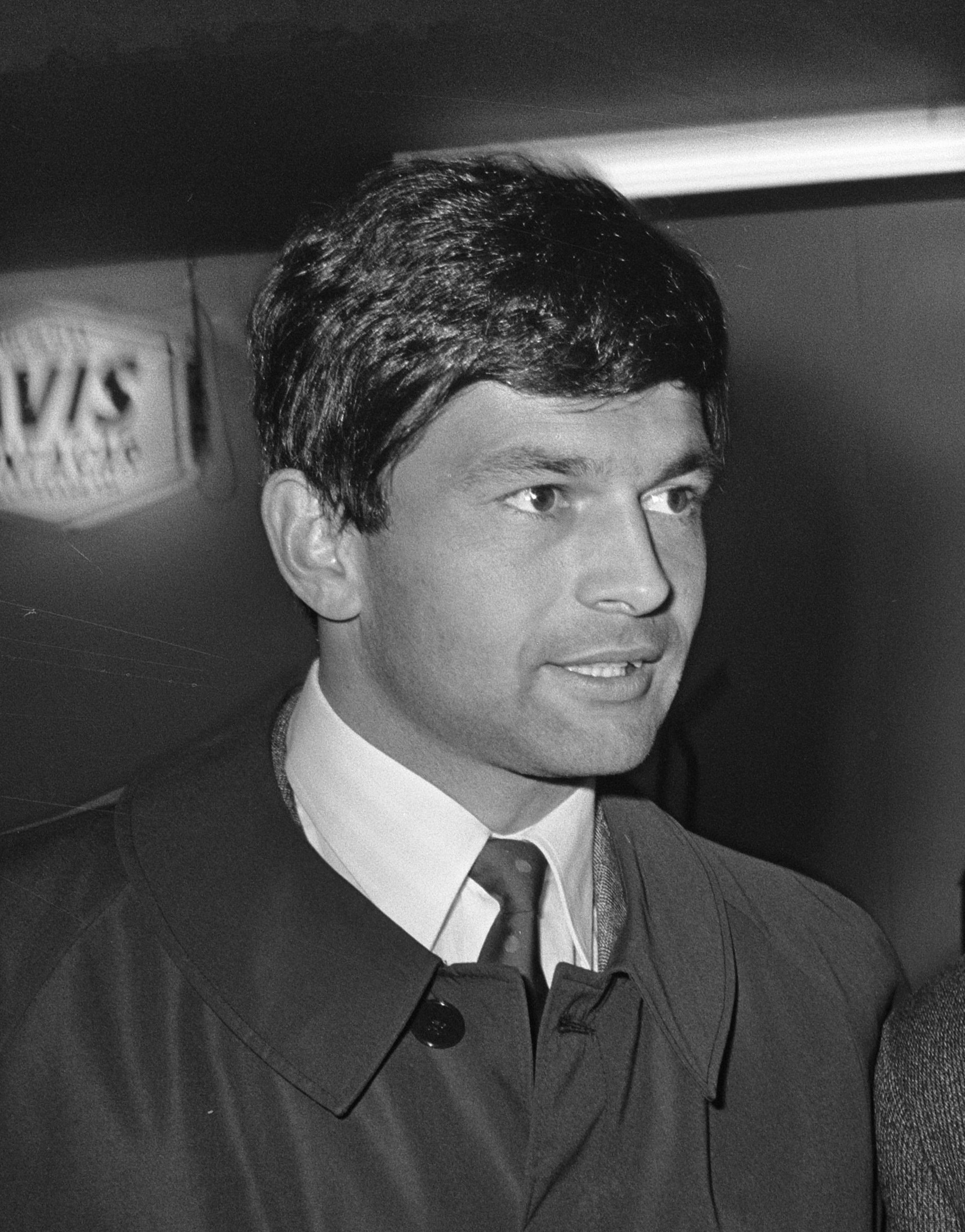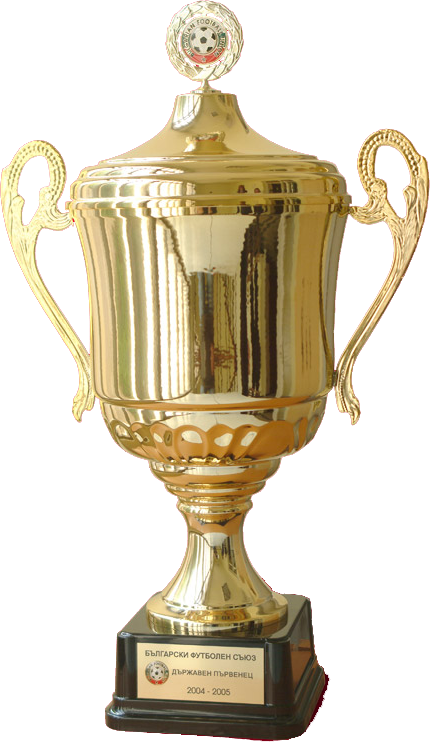|
Georgi Asparuhov
Georgi Asparuhov Rangelov ( bg, Георги Аспарухов Рангелов; 4 May 1943 – 30 June 1971), nicknamed Gundi, was a Bulgarian footballer who played as a striker. A prolific forward of his generation, Asparuhov was renowned for his finishing, technique and heading ability. He was voted the best Bulgarian footballer of the 20th century and Europe's 40th best player of the century,http://rsssf.com/miscellaneous/iffhs-century.html#eupoy, Europe – Player of the Century. a position shared with Paolo Rossi. Asparuhov was also nominated for the 1965 Ballon d'Or award, finishing eighth in the final standings. In international football, Asparuhov made his Bulgaria debut on 6 May 1962 at the age of 19. He made 49 appearances in total, appearing at three FIFA World Cup tournaments, in 1962, 1966 and 1970, and scoring 18 goals. Asparuhov's career was cut short in 1971 at the age of 28 when he died in a vehicle accident. Levski Sofia's stadium is named in his honour. ... [...More Info...] [...Related Items...] OR: [Wikipedia] [Google] [Baidu] |
Sofia
Sofia ( ; bg, София, Sofiya, ) is the capital and largest city of Bulgaria. It is situated in the Sofia Valley at the foot of the Vitosha mountain in the western parts of the country. The city is built west of the Iskar river, and has many mineral springs, such as the Sofia Central Mineral Baths. It has a humid continental climate. Being in the centre of the Balkans, it is midway between the Black Sea and the Adriatic Sea, and closest to the Aegean Sea. Known as Serdica in Antiquity and Sredets in the Middle Ages, Sofia has been an area of human habitation since at least 7000 BC. The recorded history of the city begins with the attestation of the conquest of Serdica by the Roman Republic in 29 BC from the Celtic tribe Serdi. During the decline of the Roman Empire, the city was raided by Huns, Visigoths, Avars and Slavs. In 809, Serdica was incorporated into the Bulgarian Empire by Khan Krum and became known as Sredets. In 1018, the Byzantines ended Bulgarian rule ... [...More Info...] [...Related Items...] OR: [Wikipedia] [Google] [Baidu] |
1961–62 Bulgarian Cup
The 1961–62 Bulgarian Cup was the 22nd season of the Bulgarian Cup (in this period the tournament was named Cup of the Soviet Army). Botev Plovdiv won the competition, beating Dunav Ruse 3–0 in the final at the Vasil Levski National Stadium Vasil Levski National Stadium ( bg, Национален стадион „Васил Левски“), named after Bulgarian national hero and revolutionary Vasil Levski (1837–1873), is the country's second largest stadium. The stadium has 43 .... First round Second round Quarter-finals Semi-finals Final Details References {{DEFAULTSORT:Bulgarian Cup 1961-62 1961–62 domestic association football cups Cup ... [...More Info...] [...Related Items...] OR: [Wikipedia] [Google] [Baidu] |
Ernst-Happel-Stadion
Ernst-Happel-Stadion (), known as Praterstadion until 1992, sometimes also called Wiener-Stadion, is a football stadium in Leopoldstadt, the 2nd district of Austria's capital Vienna. With 50,865 seats, it is the largest stadium in Austria. It was built between 1929 and 1931 for the second Workers' Olympiad to the design of German architect Otto Ernst Schweizer. The stadium was renamed in honour of Austrian footballer Ernst Happel following his death in 1992. The stadium hosted seven games in UEFA Euro 2008, including the final which saw Spain triumph over Germany. The stadium is owned by the City of Vienna (Municipal Department 51 – Sports of the City of Vienna). It is managed by the ''Wiener Stadthalle Betriebs und Veranstaltungsgesellschaft m.b.H.'', a subsidiary of ''Wien Holding''. It is a UEFA Category 4 stadium, and as such, it is the home of the Austria national football team. It also hosts the Viennese clubs' matches in UEFA competitions. The stadium is served by S ... [...More Info...] [...Related Items...] OR: [Wikipedia] [Google] [Baidu] |
Austria National Football Team
The Austria national football team (german: Österreichische Fußballnationalmannschaft) represents Austria in men's international football competition and it is controlled by the Austrian Football Association (German: Österreichischer Fußball-Bund). Austria has qualified for seven FIFA World Cups, most recently in 1998. The country played in the UEFA European Championship for the first time in 2008, when it co-hosted the event with Switzerland, and most recently qualified in 2020. History Pre-World War II The Austrian Football Association ("ÖFB") was founded on 18 March 1904 in the Austro-Hungarian Empire. Max Scheuer, a Jewish defender who played for the Austria national football team in 1923, was subsequently killed during the Holocaust in Auschwitz concentration camp. The team enjoyed success in the 1930s under coach Hugo Meisl, becoming a dominant side in Europe and earning the nickname "Wunderteam". The team's star was Matthias Sindelar. On 16 May 1931, they we ... [...More Info...] [...Related Items...] OR: [Wikipedia] [Google] [Baidu] |
Eusébio
Eusébio da Silva Ferreira (; 25 January 1942 – 5 January 2014), nicknamed the "Black Panther", the "Black Pearl" or "O Rei" ("The King"), was a Portuguese footballer who played as a striker. He is considered one of the greatest players of all time as well as Benfica's best player ever. He was known for his speed, technique, athleticism and his ferocious right-footed shot, making him a prolific goalscorer, in which he scored 733 goals in 745 matches. Eusébio helped Portugal reach third place at the 1966 FIFA World Cup, being the top goalscorer of the tournament with nine goals. He won the Ballon d'Or in 1965 and was runner-up in 1962 and 1966. He is Benfica's all-time top scorer with 473 goals in 440 competitive matches. There, his honours include eleven Primeira Liga titles and a European Cup, also being integral in reaching additional European Cup finals in 1963, 1965 and 1968. He is the second-highest goalscorer, behind Alfredo Di Stéfano, in the pre-Champio ... [...More Info...] [...Related Items...] OR: [Wikipedia] [Google] [Baidu] |
UEFA Champions League
The UEFA Champions League (abbreviated as UCL, or sometimes, UEFA CL) is an annual club football competition organised by the Union of European Football Associations (UEFA) and contested by top-division European clubs, deciding the competition winners through a round robin group stage to qualify for a double-legged knockout format, and a single leg final. It is one of the most prestigious football tournaments in the world and the most prestigious club competition in European football, played by the national league champions (and, for some nations, one or more runners-up) of their national associations. Introduced in 1955 as the ( French for European Champion Clubs' Cup), and commonly known as the European Cup, it was initially a straight knockout tournament open only to the champions of Europe's domestic leagues, with its winner reckoned as the European club champion. The competition took on its current name in 1992, adding a round-robin group stage in 1991 and allowing mul ... [...More Info...] [...Related Items...] OR: [Wikipedia] [Google] [Baidu] |
1964–65 A Group
The 1964–65 A Group was the 17th season of the A Football Group, the top Bulgarian professional league for association football clubs, since its establishment in 1948. Overview It was contested by 16 teams, and Levski Sofia won the championship. League standings Results Champions ;Levski Sofia Top scorers References External linksBulgaria - List of final tables (RSSSF) at a-pfg.com {{DEFAULTSORT:1964-65 A PFG First Professional Football League (Bulgaria) seasons |
Bulgarian Sportsperson Of The Year
Bulgarian Sportsperson of the Year ( bg, Спортист на годината на България, ''Sportist na godinata na Balgariya'') is an annual award given to the best Bulgarian sportsperson of the year. The winner is selected by authorized journalists. The award was established by the ''Naroden Sport'' newspaper and specifically by Aleksandar Yasnikov. It was first given in 1958 to the basketball player Vanya Voynova. The person with the most awards is high-jumper Stefka Kostadinova with four. Traditionally, the award is given at the Sportsperson of the Year Ball which is attended by journalists, sportspeople, social figures, intellectuals, etc. Bulgarian Sportspeople of the Year External linksBulgarian Sportsperson of the Yearwebsite {{DEFAULTSORT:Bulgarian Sportsperson Of The Year National sportsperson-of-the-year trophies and awards Sportsperson An athlete (also sportsman or sportswoman) is a person who competes in one or more sports that involve physic ... [...More Info...] [...Related Items...] OR: [Wikipedia] [Google] [Baidu] |
Bulgarian Footballer Of The Year
Bulgarian Footballer of the Year ( bg, Футболист №1 на България, ''Futbolist №1 na Balgariya'') is an annual title awarded to the best Bulgarian association football player of the year. The award has been given since 1961, and the winner is elected by authorized journalists from the leading Bulgarian media. History 2011 was the first year with a vote held online by fans. The poll has been organized by the Futbol newspaper (1961–1975), the Start newspaper (1975–1998), the Futbol newspaper and Start magazine (1999–present). The footballers to have won the award the most times are Dimitar Berbatov (7 times - 2002, 2004, 2005, 2007, 2008, 2009, 2010), Hristo Stoichkov (5 times - 1989, 1990, 1991, 1992, 1994), Hristo Bonev (1969, 1972, 1973) and Ivelin Popov (2015, 2016, 2017). [...More Info...] [...Related Items...] OR: [Wikipedia] [Google] [Baidu] |
Bulgarian Cup
The Bulgarian Cup ( bg, Купа на България, Kupa na Bulgaria) is a Bulgarian annual football competition. It is the country's main cup competition and all officially registered Bulgarian football teams take part in it. The tournament's format is ''single-elimination'', with all matches being one-legged, except the semi-finals. The competition's winner gets the right to take part in the UEFA Europa Conference League. If the winner has already secured a place through the Bulgarian A Professional Football Group, the team that has come ''fourth'' in the championship substitutes it. The competition has been dominated by Sofia-based teams. The Sofia teams have won together a total number of 65 titles. The three most successful teams are Levski Sofia (26 cups), CSKA Sofia (21 cups) and Slavia Sofia (8 cups). The current cup holders are Levski Sofia, who beat CSKA Sofia 1–0 in the 2022 final. Format The Bulgarian Cup tournament is divided in two phases - the ''Qualific ... [...More Info...] [...Related Items...] OR: [Wikipedia] [Google] [Baidu] |
First Professional Football League (Bulgaria)
The First Professional Football League ( bg, Първа професионална футболна лига, Parva Profesionalna Futbolna Liga), also known as the Bulgarian First League or Parva Liga, currently known as the efbet League for sponsorship reasons, is a professional association football league, located at the top of the Bulgarian football league system. Contested by 16 teams, it operates on a system of promotion and relegation with the Second Professional Football League (Bulgaria), Second Professional Football League. The Bulgarian football championship was inaugurated in 1924 Bulgarian State Football Championship, 1924 as the ''Bulgarian State Football Championship'' and has been played in a league format since 1948 Bulgarian Republic Football Championship, 1948, when the A Group was established. The champions of the First League have the right to participate in the qualifying rounds of the UEFA Champions League based on the UEFA coefficient#League coefficient, lea ... [...More Info...] [...Related Items...] OR: [Wikipedia] [Google] [Baidu] |
Shamrock Rovers F
A shamrock is a young sprig, used as a symbol of Ireland. Saint Patrick, Ireland's patron saint, is said to have used it as a metaphor for the Christian Holy Trinity. The name ''shamrock'' comes from Irish (), which is the diminutive of the Irish word and simply means "young clover". At most times'', Shamrock'' refers to either the species (lesser clover, Irish: ) or (white clover, Irish: ). However, other three-leaved plants—such as , , and —are sometimes called shamrocks. The shamrock was traditionally used for its medicinal properties and was a popular motif in Victorian times. Botanical species There is still not a consensus over the precise botanical species of clover that is the "true" shamrock. John Gerard in his herbal of 1597 defined the shamrock as ''Trifolium pratense'' or ''Trifolium pratense flore albo'', meaning red or white clover. He described the plant in English as "Three leaved grasse" or "Medow Trefoile", "which are called in Irish ''Sh ... [...More Info...] [...Related Items...] OR: [Wikipedia] [Google] [Baidu] |


.png)




